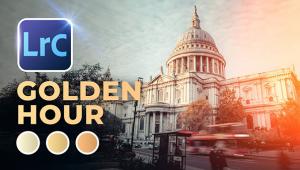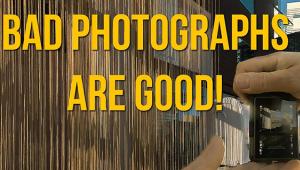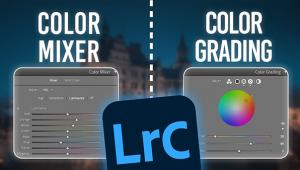Spirographic Designs In Light: Tiny Lights In Motion

A unique way to create complex geometric, multicolored designs is to attach tiny Christmas tree lights to a bicycle wheel and spin it in a dark room or outside at night. I found 7 ft of Christmas lights powered by 3 AA batteries online for about $12, and that was just enough to cover the entire circumference of the front wheel of my son’s medium sized bike. I took the wheel off the bike with a simple crescent wrench and used black electrician’s tape to affix the lights and the wires onto the rim, figure A.

All Photos © Jim Zuckerman
In order to spin the wheel, you have to get a good grip on the threaded axel that comes out either side of the wheel. The axel itself doesn’t turn as the wheel spins because it has ball bearings inside that provide a smooth rotation of the wheel. At first I used a vise grip to hold tightly on the threaded axel, and that enabled me to hold the wheel fairly well. Another approach, and one I prefer, is to go to the hardware store with the nut that screws onto the bicycle axel. I bought a bolt that screwed into that nut, and that gave me a small handle that also worked well, as seen in figure B.

The Exposure
After doing a few tests, I used ISO 125 at f/11 and got the exposures you see here. When shooting in low light, it’s especially important to minimize digital noise because it shows up very readily in the shadows. I wanted a certain amount of depth of field—hence the f/11 aperture—because during the time the shutter is open I moved all around the area.
I experimented with different shutter speeds, and I found that 15 to 25 seconds worked for me. If the shutter is open for a very long time, the abstraction of the lights gets pretty crazy. The photo of a model’s legs (#1), may be too busy for some people but in this instance I happen to like it. If the shutter isn’t open long enough, you don’t have enough time to move throughout the frame and create a design. This is a trial and error technique, but it’s a lot of fun doing it and you never know what you’ll get. Image (#2) was a 25 second exposure on my driveway at night, and during that time I moved all over the place. I started about 20 ft away and moved to within 2 ft of the lens. I didn’t refocus as I did this, of course, so the lights became somewhat softened as they got so close to the camera and tripod. Given the abstract nature of the image, though, I think it works.


By limiting the exposure time and by making conservative movements, you can produce much less complex designs as I did in (#3 and #4). If you want to go the other way toward more complexity, after you make the exposure and you like the results, try using the Photoshop plug in Flexify 2 (made by Flaming Pear Software, www.flamingpear.com) on the image or other special effects software. You can get some really wild results such as (#5 and #6).




- Log in or register to post comments









































